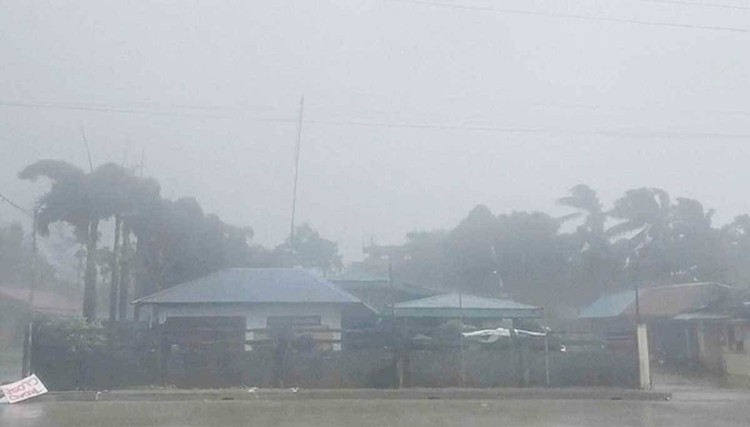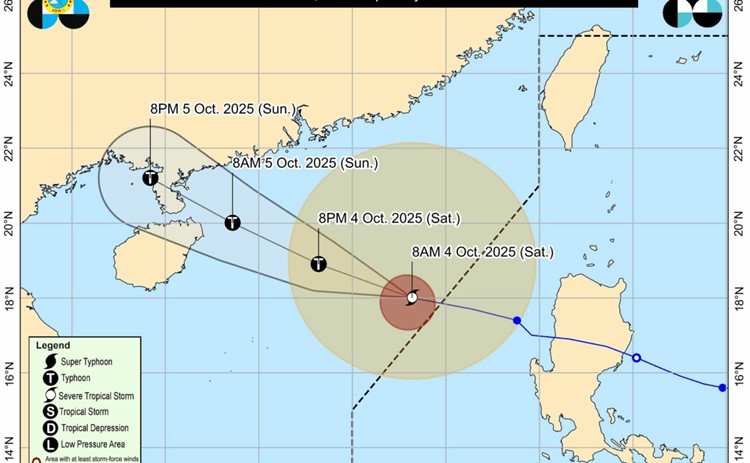Storm Paolo Moves Toward China, Filipinos Breathe Easier
PAOLO – Filipinos can finally heave a sigh of relief as Severe Tropical Storm Paolo exits the Philippine area of responsibility, prompting Pagasa to lift all wind signals.
Severe Tropical Storm Paolo (international name: Matmo) continues to track west-northwest toward southern China after leaving the Philippine area of responsibility, the state weather bureau announced on Saturday, Oct. 4.
In its 11 a.m. bulletin, the Philippine Atmospheric, Geophysical and Astronomical Services Administration (Pagasa) said all tropical cyclone wind signals across the country have been lifted, signaling an improvement in conditions.

Despite this, Pagasa cautioned that Paolo’s expansive outer rainbands may still bring storm to gale-force gusts over several northern and western parts of Luzon, particularly Batanes, northern Cagayan, including the Babuyan Islands, Apayao, Zambales, and Bataan.
The agency also issued an advisory on sea conditions, warning that moderate to rough seas are expected along the seaboards of Ilocos Region, Batanes, Babuyan Islands, Zambales, mainland Cagayan, Isabela, and Bataan. Fisherfolk, as well as operators of small boats and motorbancas, were advised against venturing into these waters due to potential risks.
As of 11 a.m., Paolo’s center was estimated at 440 kilometers west of Sinait, Ilocos Sur. The storm has maintained its strength, packing maximum sustained winds of 110 kilometers per hour near the center and gusts reaching up to 135 kph. It was moving west-northwest at a speed of 20 kph.
Pagasa noted that Paolo could re-intensify into a typhoon while traversing the West Philippine Sea before making its way closer to southern China’s coastal region.

Meanwhile, the weather bureau is monitoring another weather system outside the Philippine boundary. A low-pressure area (LPA) has been spotted and is showing signs of further development. According to forecasters, the system has a high probability of strengthening into a tropical depression within the next 24 hours.
Although the Philippines is no longer directly under Paolo’s path, authorities urged the public to remain vigilant as its outer effects may still cause localized heavy rains, strong winds, and risky sea conditions in parts of Northern and Central Luzon.
READ ALSO: Young Student Among Victims of Typhoon Opong in Masbate
